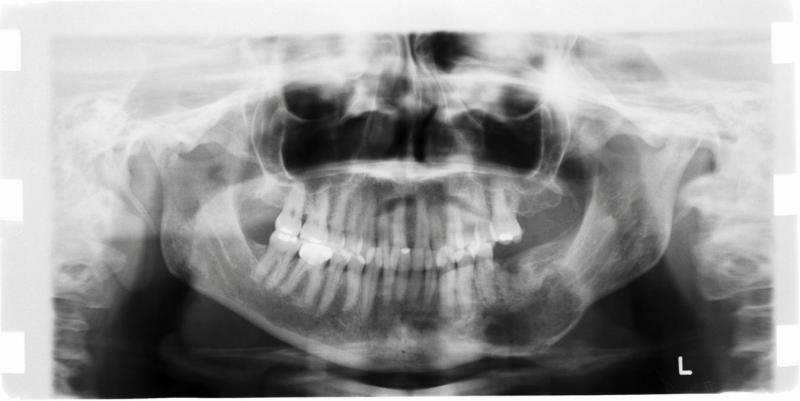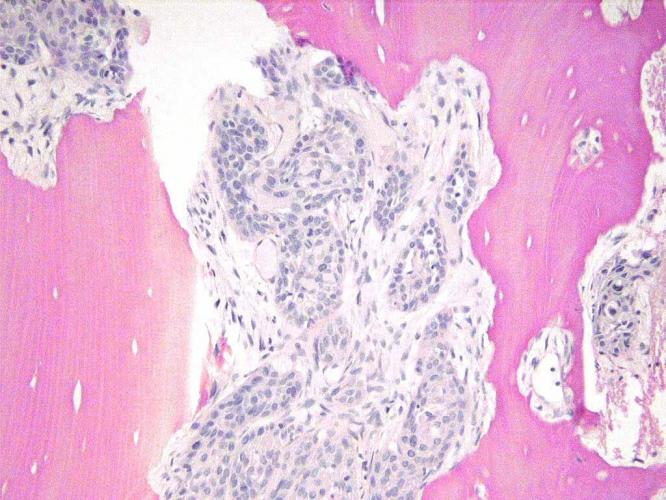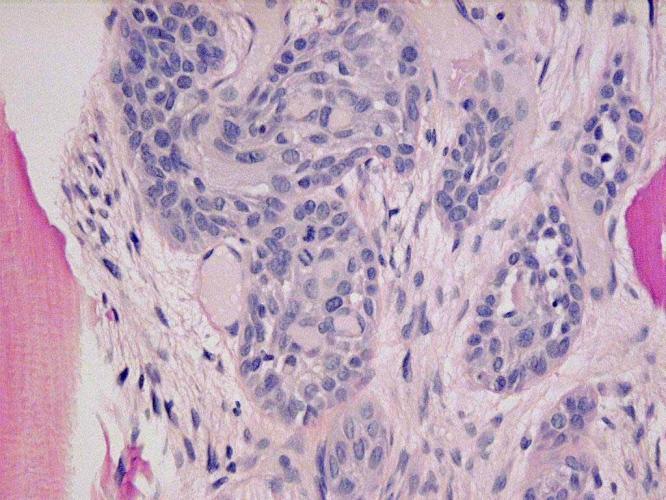CPC Case III
Provided By: Elizabeth Andrews DDS MS - 2012-05-16
Clinical History
A 63 year old, white female with a nonhealing extraction site and a chief complaint of intermittent pain and swelling. Patient reports that #19 was extracted about a year ago. Patient was given antibiotics by previous dentist and the area did improve. Medical history is positive for Fossamax use.

Differential Diagnosis
- Chronic osteomyelitis
- Often painful, can have a smoldering progression
- Bisphosphonate related Osteonecrosis
- Can have pathologic fracture, previous use of Fossamax
- Primary intraosseous carcinoma
- Odontogenic
- Mucoepidermoid Carcinoma
- Osteosarcoma
- Often painful (not the typical age)
- Metastatic Cancer
- 1-1.5% of all malignant oral tumors
Diagnosis
- Metastatic Cancer
- Most likely breast adeno-carcinoma


Clinical Features
- Metastatic disease represents 1% of all oral cavity malignancies.
- 90% of metastases located in either the mandible or the maxilla, and 10% involving the soft tissues of the oral cavity.
- Bony metastases of the oral cavity are 3 times more likely with breast cancer than with any other malignancy.
-
Oral cavity metastases are reported as the first clinical indication of a primary malignancy in 22% to 33% of patients.
-
The most common primary sources of metastatic tumors to the oral region are cancers in the breast, lung, kidney, thyroid and prostate.
-
The breast is the most common primary site for tumors that metastasize to the jawbones, whereas the lung is the most common source for cancers that metastasize to the oral soft tissues
Radiographic Findings
Ill defined RL with definite expansion and destruction of the mandible
Treatment & Prognosis
- Patient was referred to Oncologist
- Metastatic Breast Cancer
- Patient DOD within 2 years
Discussion
- Older patients
- Pain, swelling, loosening of teeth
- Numb-chin-syndrome
- Non-healing extraction site
- May have symptoms before any radiographic evidence of the disease
- Poor Prognosis
- Automatically Stage IV Disease
- 5 year survival with a met to oral cavity is exceedingly rare
- Most often patients do not survive more than a year
References